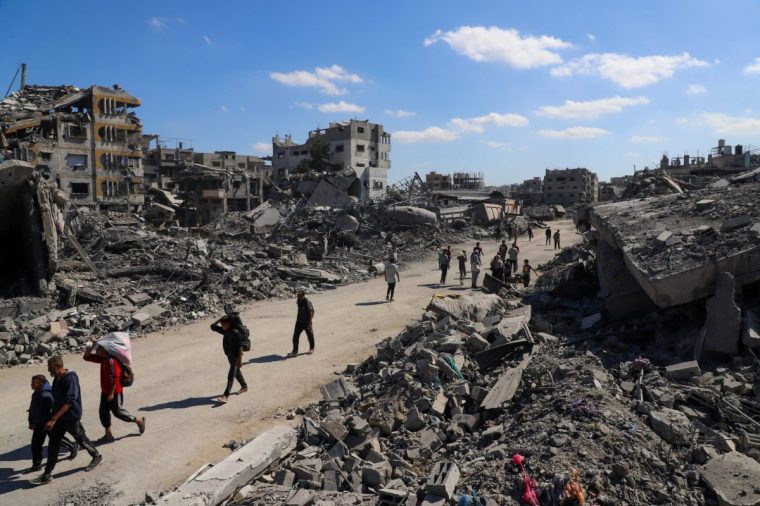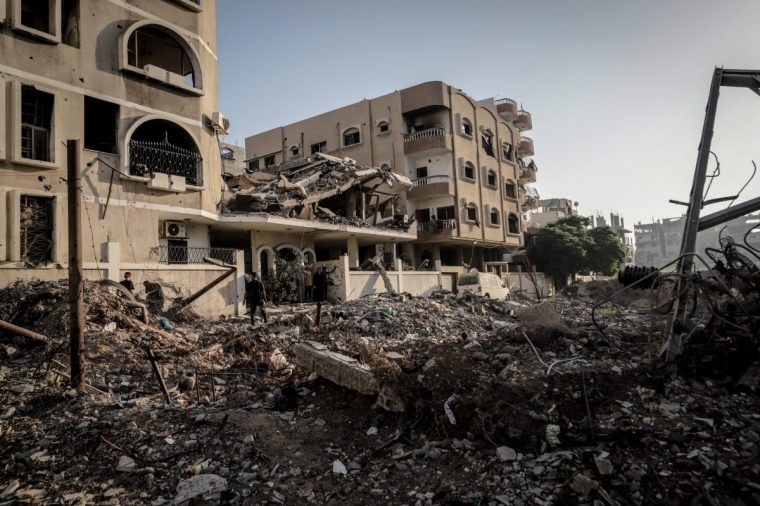Just nine of the 28 dead hostages have been returned, extending the nightmare for families and threatening to collapse the Gaza peace deal
The bodies of some of the Israeli hostages taken by Hamas may never be found, analysts have warned, as the militant group says it cannot easily hand over any further remains.
Under Donald Trump’s peace plan, all living and deceased hostages kidnapped by Hamas on October 7, 2023, were due to be released to Israel within the first 72 hours of a ceasefire.
But so far, just nine of the 28 dead hostages are confirmed to have been returned, with a tenth released to humanitarian intermediaries and awaiting identification. All 20 of the living hostages have been handed over.
Hamas says it cannot access any further remains without “significant efforts and special equipment”, but Israel has accused it of deliberately withholding their locations.
The tension could have major implications for the ongoing peace process.
Locating the bodies
Israel says it knows that five of the hostage bodies “have disappeared,” CNN reported, but a dispute is ongoing with Hamas about the bodies of several others, with Israel maintaining that Hamas has access to at least six other bodies.
Hamas claims it has handed over all of the bodies it can locate.
Dr Ahron Bregman, an academic at King’s College London who served for six years in the Israeli army, said that Israel has likely killed some of the people who knew where the bodies were located.
“Israel has turned the [Gaza] Strip into rubble and the bodies are probably buried beneath the rubble, or in collapsed tunnels, or consumed by animals. Those who buried some of the bodies were killed,” he added.
“Some of the bodies might not be found which is an awful tragedy for families looking for a closure.”

Bregman cited the case of Ron Arad, an Israeli Air Force navigator who bailed out over Lebanon in 1986, was captured alive by the Amal militia, and never seen again.
“It’s an Israeli trauma, and it might be that this trauma will repeat itself,” he said.
Recovering the bodies
Even if Hamas knows the locations of the bodies, it will be a difficult to recover them, as they may be trapped under layers of rubble.
Parts of Gaza are 92 per cent destroyed, a UN official said, with the damage totalling upwards of $70 billion.
The Mines Advisory Group, which clears explosives around the world, said there are “millions of tons of rubble” in Gaza which may be littered with unexploded bombs buried as deep as 14 metres under the surface, making it incredibly time consuming and dangerous to clear.

“This is a place that was a warzone for two years now,” said professor Yossi Mekelberg, a senior consulting fellow at Chatham House.
“To identify where the bodies were buried will [be a challenge] and whether they can find all of them,” he said. “There might be cases where they don’t even know or can’t find them, or places they were buried were bombed.”
Identifying the bodies
Many of remains have been in Gaza for a considerable amount of time, which could make identification difficult. Israel this week accused Hamas of sending back the wrong body during one hostage release.
It’s the second time this has happened: in February, Hamas said it had returned the body of Shiri Bibas, who was killed along with her infant twins in Gaza, but the body was not hers.

If the correct bodies are not located, recovered, and returned, the Israel-Hamas peace plan risks collapse.
All living and deceased hostages must be released for Trump’s peace plan to be fulfilled, and failure to hand over captives – particularly if Israel believes Hamas is able to – could cause Israel to walk away from the deal.
Yossi Kuperwasser, a retired brigadier general and former head of research at Israel Defence Forces Military Intelligence, said that Israel believes Hamas has more information than it is willing to share.
He suggested Hamas had political reasons for requesting more time and equipment to recover the bodies, including trying to maintain leverage over Israel and wanting to use heavy equipment “for other purposes”.
“Maybe there is a need for this kind of equipment, but we are not there yet,” he told The i Paper.
If the bodies are not returned, Kuperwasser said that the ceasefire may continue to hold but that Israel may not fulfil other parts of the peace deal, such as opening the Rafah crossing to allow a surge of aid into Gaza.
Famine was declared in Gaza City earlier this year, with a number of children starving to death in the Strip.
Kuperwasser said Israel would allow enough aid in to meet the humanitarian needs, but could permit less than previously agreed.
However, Bregman said that Trump would not allow difficulties in returning the remains of deceased hostages to derail the entire peace plan.
“Trump’s decision to end the war is strategic. Therefore, he will not let anyone to ruin it,” he said.
Bregman added that the US also acknowledges that Hamas faces genuine difficulties to retrieve the bodies. “I expect Israel, and even Trump, to keep threatening Hamas,” he said. “Equally, I expect the Trump plan to proceed to the complicated phase two.”
